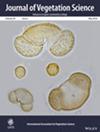Seed Bank and Ashfalls: The Ecological Resetting Effect of the Recent Tajogaite Volcano Eruption in the Canary Pine Forest (La Palma, Spain)
Abstract
Question
Tephra deposition is one of the most critical sudden alterations caused by volcanic eruptions in ecosystems. Tephra accumulation on the ground decreases with distance from the crater. The effect of ash deposition on the seed bank and its subsequent germination success has previously been studied by removing the tephra from the soil. However, conducting controlled experiments on the effect of tephra thickness on the seed bank and its seedling emergence capacity is a new approach to tackle and quantify recruitment mechanisms. Here, we present the first experimental study of the impact of tephra layer thickness on the seed bank combined with field surveys on seedling emergence.
Location
Tajogaite volcano, Cumbre Vieja Ridge, La Palma, Canary Islands.
Methods
The study includes a controlled experiment and a field survey along a gradient from the volcano crater to the perimeter within the Canary Island's pine forest. In the experiment, six tephra thickness categories were used to bury seeds (1, 5, 10, 45, 75 and 150 cm) based on observatory evidence corresponding to the distance away from the crater (7, 4, 2, 1.5, 0.75 and 0.15 km, respectively). Seeds were collected from the four most characteristic endemic pine forest species, representing different seed sizes and growth forms: Pinus canariensis (Pinaceae, tree), Chamaecytisus proliferus (Fabaceae, shrub), Lotus campylocladus (Fabaceae, forb) and Cistus symphytifolius (Cystaceae, shrub). One hundred seeds of each species were used per treatment (2800 seeds). In the field survey, we randomly established six quadrats (30 × 30 m) at the same distance from the crater as indicated above. Seedlings (< 5 cm in height) from natural regeneration were counted every three months.
Results
After 18 months under ash, germination in the experiment was only detected in the treatments of control (germination rate of P. canariensis = 71%, Ch. proliferus = 13%, L. campylocladus = 24%, C. symphytifolius = 1%), and at 1 cm (51%, 18%, 11%, 1%) and 5 cm (5%, 4%, 0%, 0%) of ash depth.
Conclusions
The massive ashfall during this eruption completely and suddenly dysfunctionalized the seed bank as a reservoir of recruitment in areas within a radius of approximately 5 km from the crater (still buried under a 5 cm thick ash layer to date). Therefore, we provide evidence for the hypothesis that the recent volcanic eruption will profoundly change plant community dynamics and composition within large areas of the Canary Island's pine forest.


 求助内容:
求助内容: 应助结果提醒方式:
应助结果提醒方式:


